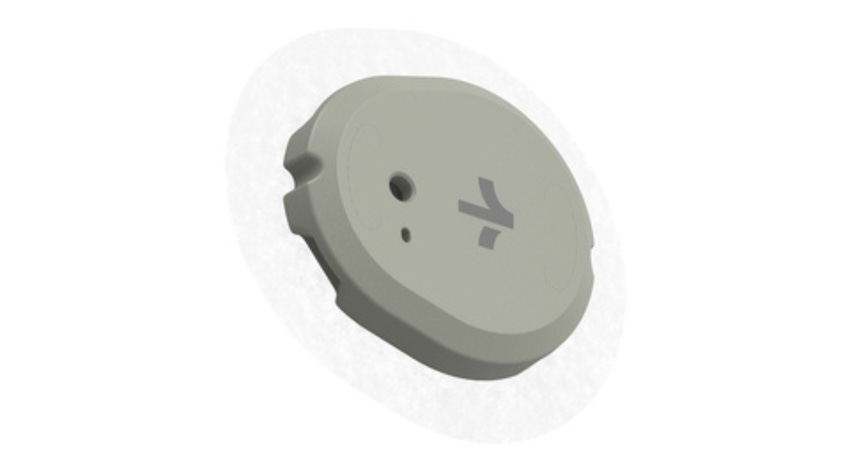Dexcom's Historic Win for CGM
FDA cleared the first over-the-counter continuous glucose monitoring device.
March 7, 2024

At a Glance
- Stelo will be the first glucose biosensor in the United States available without a prescription
- The device is designed for any adult, regardless of diabetes status, who is not using insulin therapy
- Stelo will be available this summer
In what is undoubtedly a historic win for diabetes management, FDA has cleared the first over-the-counter (OTC) glucose biosensor.
Indicated for adults (18 years and up) who are not using insulin therapy, Dexcom's Stelo is built on the same platform as the company's G7 continuous glucose monitoring (CGM) sensor.
"The broad approval — as well as OTC indication, which eliminates the need for a prescription — increases the [total addressable market] by many multiples," Margaret Kaczor Andrew, a William Blair analyst, wrote in a report Wednesday.
The analyst also points out that, as awareness of metabolic health and disorders brings people into the system, it should raise demand for technologies like CGM even higher.
"All of this should make the CGM market — and its largest pure-play beneficiary in Dexcom —one of, if not the fastest, medical technology market to reach more than $5 billion over the next five years."
Worn on the back of the upper arm, Stelo is designed to provide glucose insights directly to a user's smartphone.
Stelo was developed to address people with type 2 diabetes who do not use insulin to take control of their health. That said, it also has the potential to impact people with pre-diabetes and anyone who wants to track their glucose levels for health insights.
While the Dexcom G7 is available by prescription to U.S. patients living with type 2 diabetes who do not use insulin and who can benefit from CGM technology, the new device will make it even easier for this population to access leading CGM technology. Perhaps more importantly, it will provide an option for people who do not have insurance coverage for CGM.
For Dexcom, Stelo represents another notch in a long list of first-in-market achievements. The San Diego, CA-based company says it was the first to connect CGM to multiple insulin delivery devices, the first to connect CGM to a smartphone, and the first to replace fingersticks for treatment decisions. Now, the company is creating a new category with the first-to-market glucose biosensor cleared for over-the-counter use.
Jake Leach, executive vice president and chief operating officer at Dexcom, said the company leveraged its experience serving people with type 2 diabetes who do not use insulin to develop Stelo with their unique needs in mind.
It's estimated that about 25 million people in the United States are diagnosed with type 2 diabetes but do not use insulin to manage the disease. If you include people living with diabetes who are not yet diagnosed, the pool expands to 40 million, Leach told MD+DI. Meanwhile, according to William Blair's estimates, the number of people with pre-diabetes in the United States is triple that.
“It’s about providing access to CGM to more people that can benefit," Leach said.
People who don't take insulin don't have a risk of hypoglycemia so they don't really need all the low glucose protection features that a CGM system like the Dexcom G7 has, Leach said.
And so, he said, "Stelo is a product that really delivers on that idea of, 'how do I learn about how my glucose changes over time and make modifications to diet and activity levels to better manage diabetes and ultimately lower my average glucose?'"
Dexcom notes that CGM plays an integral role in the management of type 2 diabetes, and the benefits are proven when used alone or alongside other diabetes and weight management medications.
“Use of CGM can help empower people with diabetes to understand the impact of different foods and activity on their glucose values,” said Tamara Oser, MD, a family physician. “For people newly diagnosed with type 2 diabetes or not taking insulin, these devices are often not covered by insurance, and Stelo presents an opportunity to provide valuable information that can impact their diabetes management.”
Marie Thibault, a medtech analyst at BTIG, noted that Dexcom plans to invest in both direct-to-consumer marketing and adding sales reps targeting the primary care provider channel to support the Stelo launch. The company has also launched several trials to build the necessary evidence to pursue reimbursement, she noted.
"Management has compared these efforts to what they did in the basal patient population, where the MOBILE study was supplemented with real-world evidence to justify the clinical and economic value to health systems," Thibault wrote.
About the Author(s)
You May Also Like




